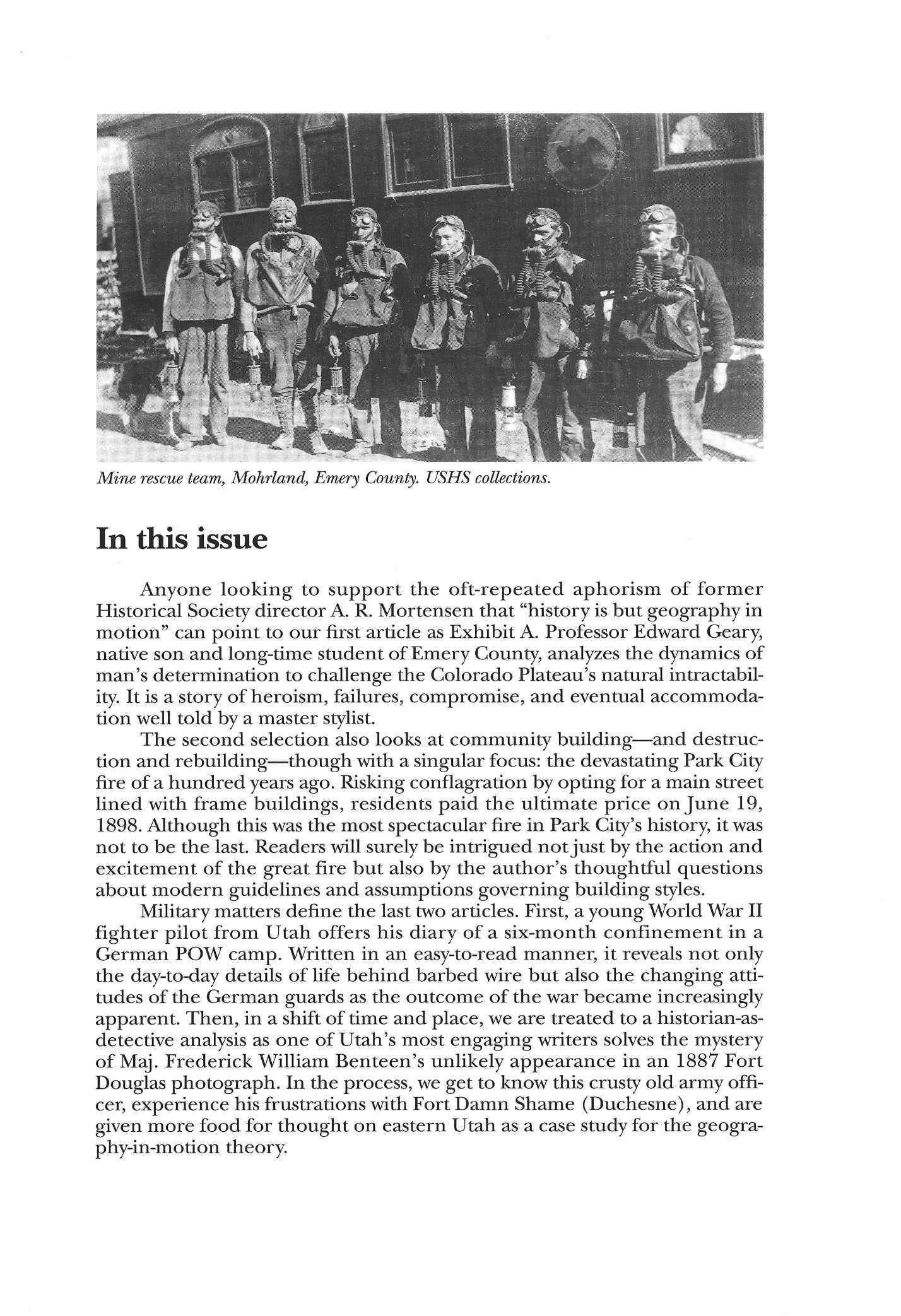
2 minute read
In This Issue
Anyone looking to support the oft-repeated aphorism of former Historical Society director A. R. Mortensen that "history is but geography in motion" can point to our first article as Exhibit A Professor Edward Geary, native son and long-time student of Emery County, analyzes the dynamics of man's determination to challenge the Colorado Plateau's natural intractability It is a story of heroism, failures, compromise, and eventual accommodation well told by a master stylist.
The second selection also looks at community building—and destruction and rebuilding—though with a singular focus: the devastating Park City fire of a hundred years ago Risking conflagration by opting for a main street lined with frame buildings, residents paid the ultimate price on Jun e 19, 1898. Although this was the most spectacular fire in Park City's history, it was not to be the last Readers will surely be intrigued not just by the action and excitement of the great fire but also by the author's thoughtful questions about modern guidelines and assumptions governing building styles.
Military matters define the last two articles First, a young World War II fighter pilot from Utah offers his diary of a six-month confinement in a German POW camp. Written in an easy-to-read manner, it reveals not only the day-to-day details of life behind barbed wire but also the changing attitudes of the German guards as the outcome of the war became increasingly apparent. Then, in a shift of time and place, we are treated to a historian-asdetective analysis as one of Utah's most engaging writers solves the mystery of Maj Frederick William Benteen's unlikely appearance in an 1887 Fort Douglas photograph. In the process, we get to know this crusty old army officer, experience his frustrations with Fort Damn Shame (Duchesne), and are given more food for thought on eastern Utah as a case study for the geography-in-motion theory.
Photo - Mine rescue team, Mohrland, Emery County. USHS collections.








